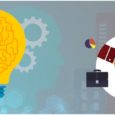Deep learning, assisted transportation and virtual reality are among the technological trends that IEEE experts predict will be widely adopted in 2019.
While many people have made crazy predictions about the future of technology, the IEEE Computer Society predicts a more realistic view of key technology trends likely to reach adoption in 2019, according to a report.
Certain technologies outperform others in terms of adoption, including Kubernetes and Docker, and cutting-edge computing, and were out of the list this year, experts said. While other technologies, such as digital twins, real-time ray tracing and server less computing, are on the radar, that have not yet reached widespread adoption and can be revisited next year, experts said in the report.
“The Computer Society forecasts, based in in-depth analysis of a team of technology experts, identify key technologies with the substantial potential to disrupt the market in the year 2019,” said Hironori Kasahara, president of the IEEE Computer Society, in a press launch. “The technical community depends on the Computer Society as a source of IP technology, trends and information. IEEE-CS forecasts represent our commitment to keep our community prepared for the technological landscape of the future.”
Here are the top 10 technology trends that IEEE experts predict will reach wide adoption by 2019.
1. Deep Learning Accelerators (GPUs, FPGAs and TPUs)
Companies are announcing more and more plans to design their own accelerators, which are commonly used in data centers and have the potential to be deployed on the edge. “The development of these technologies will enable machine learning (or smart devices) to be used on many IoT devices and devices,” the report said.
2. Assisted transport .
We are still a few years of autonomous and fully autonomous cars, but personal and municipal vehicles are increasingly integrating automated assistance. The broader adoption of these technologies will pave the way for totally unmanned cars.
3. The Internet of Bodies (IoB)
Consumers continue to adopt the Internet of Things (IoT) and self-monitoring devices that are approaching and even within the human body, including fitness trackers and smart glasses.
“Digital pills are entering conventional medicine and embedded and embedded IoB devices are also being beginning to interact with sensors in the environment,” the report said. “These devices generate richer data that allows for more interesting and useful applications, but also raise concerns about security, privacy, physical damage and abuse.”
4. Social credit algorithms
Social credit algorithms use facial recognition and other biometric data to identify people and retrieve data about them from social media and other online profiles for the purpose of approving access to social products or services. Some countries such as China are already using such systems to assess loyalty to the state, the report noted.
In our networking world, combining biometric data and social data sets can turn a brief observation into a judgement about whether a person is a good or bad risk or deserves a public social sanction. Some countries are already using social credit algorithms to assess loyalty to the state.
5. Advanced materials and devices (intelligent)
Advanced materials and devices, such as tunable glass, smart paper and ingestible transmitters, will create new applications in healthcare, packaging, appliances and other fields. The use of these technologies will have a major impact on how we perceive IoT devices and will lead to new use cases, the report said.
6. Active safety protection
As hackers become more sophisticated, a new generation of security methods takes a more active approach than in the past, exploiting machine learning and other methods to identify attacks.
7. Virtual Reality (VR) and Augmented Reality (AR)
VR and AR technologies can be useful for training employees, education, engineering and other fields. However, the high cost of entry led to a lack of applications, which, in turn, kept costs high, the report noted. But as virtual reality headsets become more popular, we can reach a critical point this year.
8. Chatbots and AI
Artificial Intelligence (AI) chatbots are often used for basic customer service and operating systems as virtual assistants, and their ease of use and utility has grown in recent years, according to the report. The technology will continue to spread to other industries for more use cases by 2019.
The tablet I use to make notes, for example, has just released an update that lets you send your handwritten notes to the database in the cloud, which will convert them into text. Or, as they say, you will send your notes “to a well-trained AI who interprets and translates each letter, word, and phrase into editable, standardized typed text.”
Expect this to be one of the key buzzwords next year.
9. Automated prevention of voice spam (robocall)
Spam phone calls are a continuing problem, especially because attack methods such as falsifying the caller ID number of the victim’s family or co-workers have increased.
“This is causing people to regularly ignore phone calls, creating risks such as real, unanswered emergency calls,” the report said. “However, emerging technology can now block the identification of fake calls and intercept questionable calls, so the computer can ask the caller to see if he or she is legitimate.
10. Technology for Humanity (specially machine learning)
Soon, technology will be able to help solve social problems, according to the report.
“We anticipate that the large-scale use of machine learning, robots and drones will help improve agriculture, alleviate drought, ensure food supply and improve health in remote areas,” the report said. “Some of these activities have already begun, but we anticipate an increase in adoption rate and success stories next year.”
Conclusion
At this point, we are about two steps from becoming cybrogs. Since we can send our consciousness to the cloud and get rid of our bodily functions, we will be there: fully integrated with technology. In the meantime, it seems we are approaching each day.




